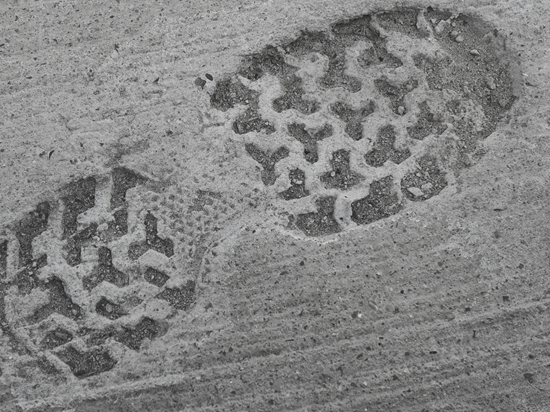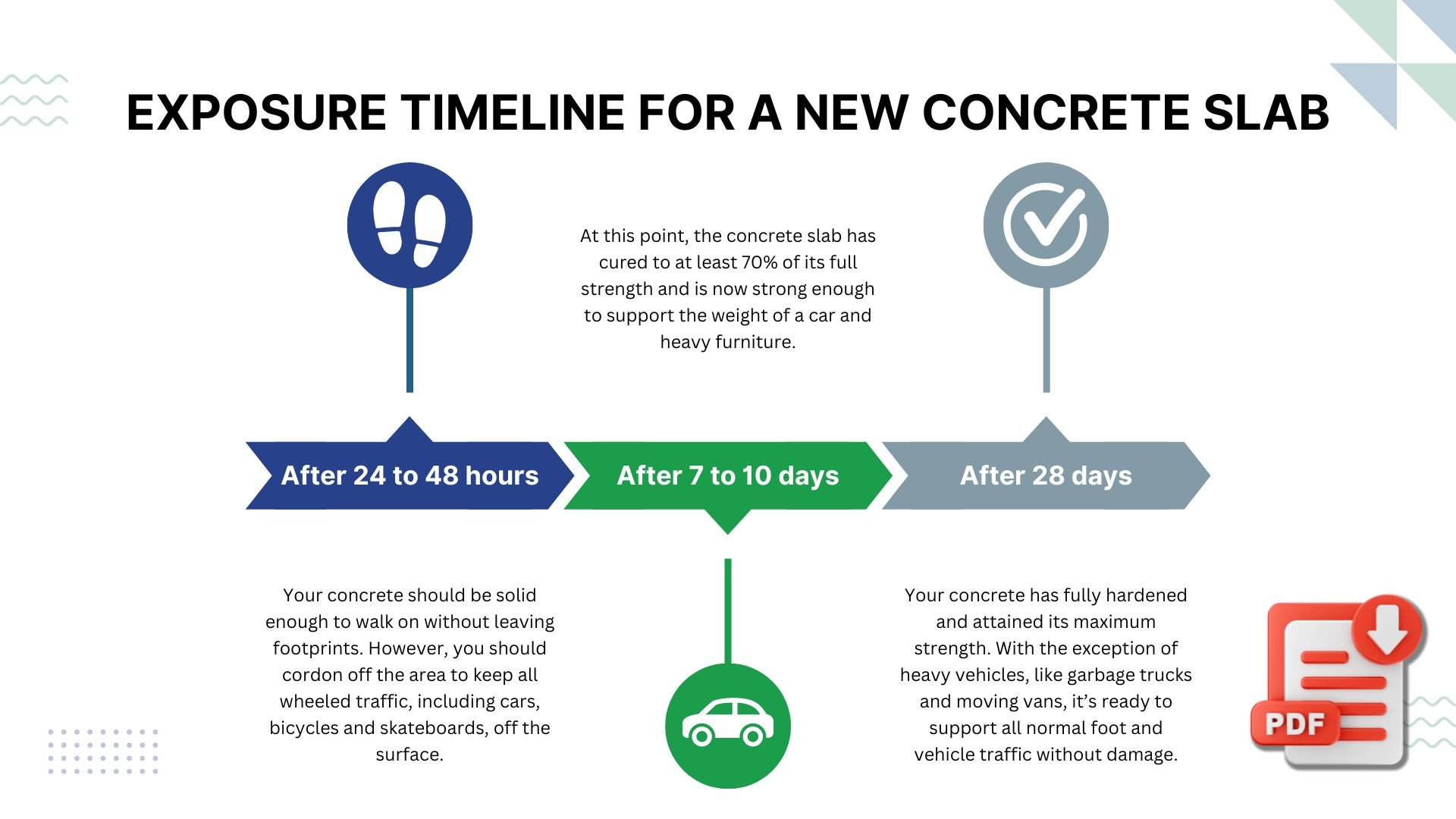- Concrete Curing Guide
- Curing Colored Concrete
- How Long Before You Can Drive on Concrete?
- How Long Before You Can Walk on Concrete?
- Curing Products
- Related Information:
- Proper curing techniques for concrete driveways
- How to fix common curing problems: Expert advice from Chris Sullivan
- Concrete Calculator: How much concrete do you need?
- Product Newsletter: Sign up today to receive monthly updates
How Long to Wait Before Walking on New Concrete
Avoid ruining the appearance of your newly placed concrete slab by following these basic guidelines.
We’ve all seen concrete sidewalks “adorned” with imprints of paws or the soles of someone’s shoes. Whether done by intention or mischance, these markings are permanent reminders of what can happen when newly placed concrete is walked on too soon.
Find decorative concrete contractors near me.
So when is a new concrete sidewalk, patio, or other slab ready for foot traffic? And can you affect the structural integrity of a slab by putting too much weight on it before it cures? Here’s what you need to know.
When can I walk on new concrete?
Although a new concrete slab will begin to set within a few hours after placement, you should wait at least 24 hours before walking on it. This is the time when your concrete is the most vulnerable to damage because it is still wet under the surface. Any foot traffic before then, especially scuffing or twisting of your feet on the surface, can leave permanent marks. Keep your pets and things like skateboards, strollers, and bicycles off the concrete, too, because they can also mar the surface.
Tip: The surface of your concrete may look dry enough to walk on after only 12 hours, but don’t be tempted. A full 24 hours is the minimum required for most types of concrete.
How long should concrete cure before putting weight on it?
The entire curing period for a concrete slab takes about 28 days, but your concrete will be dry enough to support weight much sooner. Although concrete is generally okay to bear the weight of light residential foot traffic after 24 hours, it’s often a good idea to give it a full 48 hours to cure and gain strength before exposing the slab to heavier foot traffic. You may need to wait a week or longer for the concrete to cure before you can expose it to the weight of vehicles or heavy furniture.
Read more about the importance of curing concrete and learn how the curing process is done.

What is the difference between concrete drying and curing?
Concrete drying and curing are different processes that occur simultaneously after your concrete slab is placed. Drying is the evaporation of excess water from a freshly poured slab so it will become hard enough to walk or drive on. Curing is a chemical process that allows the concrete to fully hydrate and attain the desired strength, durability, and wear resistance.
What factors affect concrete curing time?
Weather conditions and the concrete mix design have the greatest impacts on curing time. Concrete cures best at air temperatures between 50° F and 80° F. At colder temperatures, the curing time will lengthen significantly (see Why Is Cold Weather a Problem When Pouring Concrete?) and at warmer temperatures it will dry too quickly, which can lead to shrinkage cracking.
The water-cement ratio of the concrete mix is also a factor. Contractors will sometimes add more water to a mix at the jobsite to improve its workability. However, a mix with too much water can reduce concrete strength and durability and prolong the time it takes for your concrete to cure and dry. Instead, ask your concrete contractor to add a water-reducing admixture to the mix to keep the concrete workable during placement without the need for extra water.
Can I speed up the curing process?
Yes, but in most cases it’s not recommended. Curing is a necessary chemical reaction important to the strength development of concrete, so taking measures to rush the curing process can actually lead to weaker concrete. However, if you have no option other than to place your concrete slab during a period of cold weather, there are several ways to speed up the curing time, including the addition of hot water to the mix and the use of a nonchloride accelerator.
Learn more about curing concrete in cold weather.
Always err on the side of caution
No one wants to go through the expense and hassle of repairing or replacing a new concrete slab because of damage caused by putting it into service too soon. Although it’s usually safe to walk on concrete 24 hours after placement, giving it another day or so of drying time won’t hurt, especially if the slab will receive heavy foot traffic. And after a week, your concrete will not only be strong enough to walk on, it will also be able to support the weight of most standard-size vehicles.
RELATED:
How Long Before You Can Drive on Concrete?
 TK Cure and Seal Products
Curing agents for new concrete. Non-Yellowing
TK Cure and Seal Products
Curing agents for new concrete. Non-Yellowing
 1300-CLEAR - Curing Compound
Wax based curing compound. Great for interior and exterior.
1300-CLEAR - Curing Compound
Wax based curing compound. Great for interior and exterior.
 Cures & Cure & Seals
Improved resistance to rain, the sun, freezing temperatures, stains, and more.
Cures & Cure & Seals
Improved resistance to rain, the sun, freezing temperatures, stains, and more.
 Water-based Curing Compound
VOC-Compliant. Easily applied with spray equipment.
Water-based Curing Compound
VOC-Compliant. Easily applied with spray equipment.




